Original Title: "From 'Evangelist' to 'Harvester': The Art of 'Pumping and Dumping' by Galaxy"
Original Author: Daii
In the world of cryptocurrency, the distance between "evangelists" and "harvesters" is often separated by a line so thin it is almost invisible.
This line is called "trust."
Today, the evangelist we are discussing is Mike Novogratz, a former Goldman Sachs partner, advisor to the New York Fed, and now the founder and CEO of Galaxy Digital. With unparalleled passion and unwavering belief, he spreads the vision of cryptocurrency to the world through various means, becoming an undeniable voice in the industry.
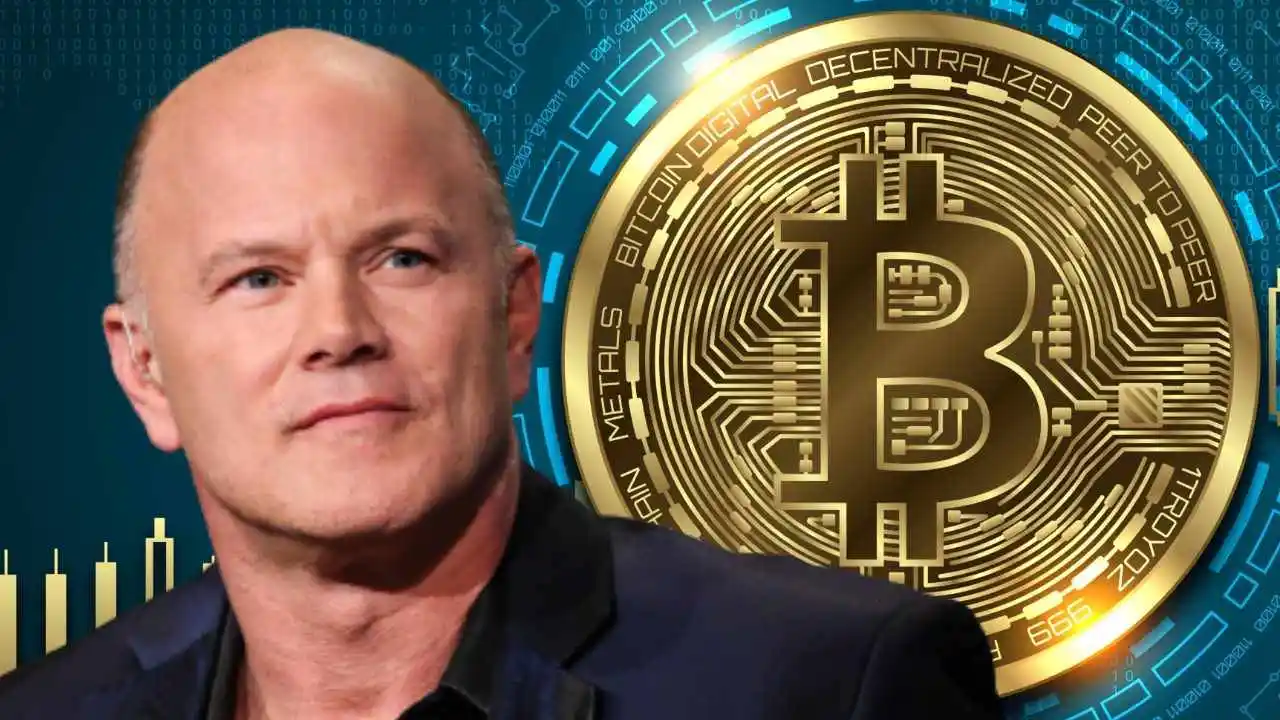
Galaxy Digital, hailed as "the institution on Wall Street that understands cryptocurrency the most," not only manages billions of dollars in assets but also enjoys a high reputation throughout the crypto industry. Countless investors have poured their funds into Galaxy, trusting Novogratz and dreaming of seizing the opportunities of the era, hoping to be among the lucky few.
However, sometimes "trust" becomes a deadly trap.
The story we are about to tell was originally meant to be shared with you last week, but the sudden U.S.-China tariff war forced us to temporarily interrupt with a discussion on the disintegration of dollar hegemony and the rise of decentralized stablecoins. While those grand narratives concern the global landscape, today's story may be more important for the average investor.
If you have ever lost everything in an investment in Luna, there is no need to blame yourself excessively. It is not that you lack judgment, nor that Luna was destined to fail from the start, but rather that you had no idea that the person urging you to "hold the faith" had quietly emptied his holdings long before you bought in at a high price.
What you should be more wary of is that such harvesting schemes have never ended; they have merely changed their scenes and actors. Almost every "faith frenzy" is backed by countless retail investors paying for the precise selling strategies calculated by a small group of people.
You might feel angry and even try to seek justice. But the harsh reality is: unless you can clearly prove the fraudulent intent of these KOLs (Key Opinion Leaders) or institutions, it is almost impossible to recover your losses.
This is because the legal threshold for defining fraud is extremely high; you must provide sufficient evidence to prove that the other party not only knew there were significant risks or false information about the project but also harbored clear malice, deliberately misleading you into entering the market to facilitate their cashing out at a high price.
However, reality is always more complex than theory. KOLs cleverly avoid the legal red lines, always speaking in ambiguous terms like "optimistic," "huge potential," and "this is just my personal opinion and does not constitute investment advice." As long as their language is sufficiently vague and their selling actions sufficiently discreet, it becomes nearly impossible to secure a conviction.
This is the thickest veil of shame for KOL-style harvesting—difficult to prove motives, subjective without evidence.
But you must be curious: since it is so hard to be discovered, why did Galaxy's CEO Mike Novogratz ultimately "crash"?
At this point, we must mention a key figure—the New York State Attorney General—and a special piece of legislation—the "Martin Act." It is due to this law, or rather the existence of this statute, that the New York State Attorney General can initiate an investigation without proving clear fraudulent intent, exposing the intricate scams hidden behind "faith." Galaxy was the first to be caught, but it will certainly not be the last. We have previously provided a very detailed introduction to the Martin Act, which once led to a $450 million fine for the Trump Organization and is now targeting the crypto space.
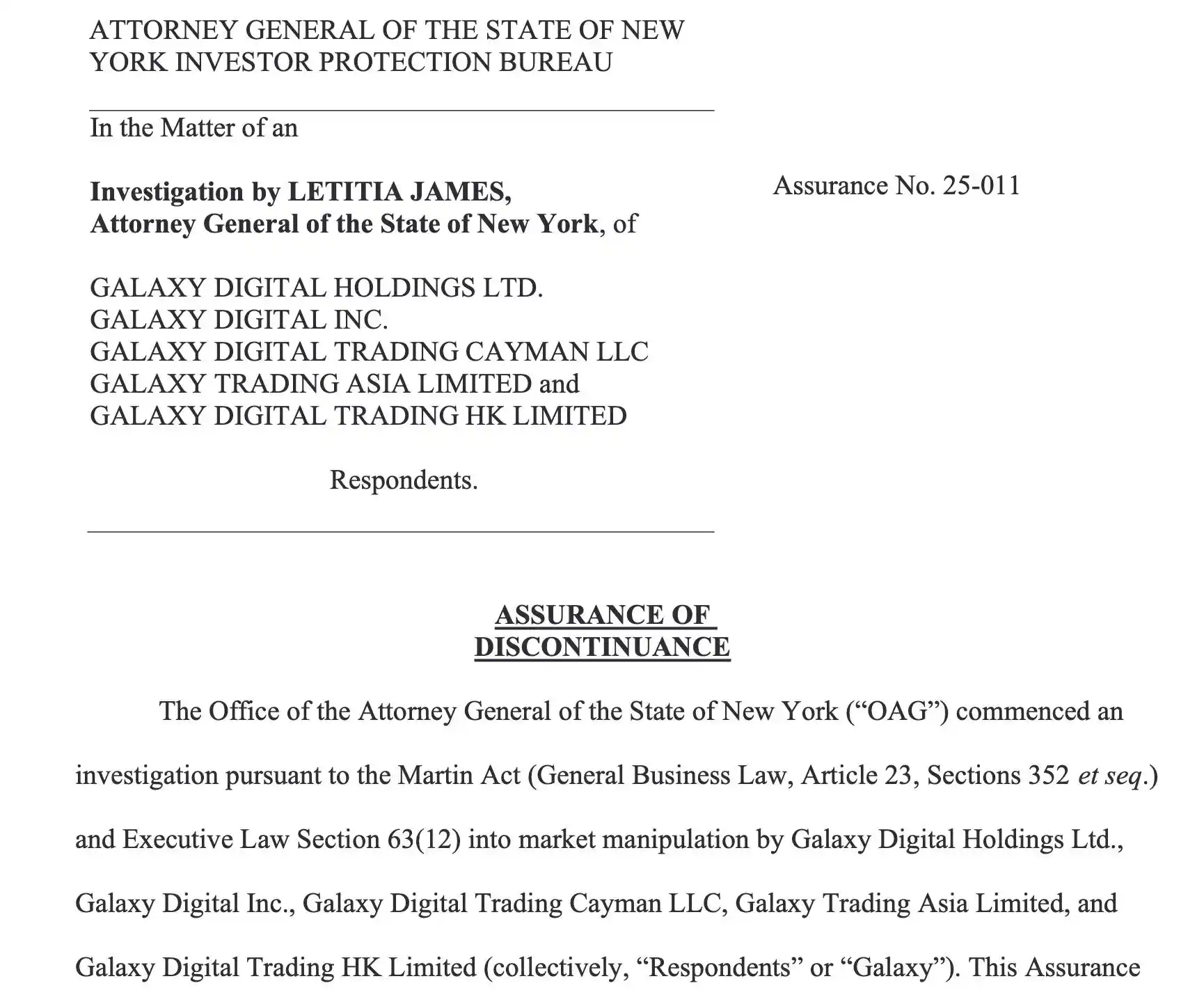
After reviewing the 44-page document from the New York State Attorney General's office, I couldn't help but marvel: without the so-called "harshest securities law in America," there would have been no in-depth investigation by the New York State Attorney General. We might never have known that behind the $40 billion bubble of Luna's collapse lay such a sophisticated and clever institutional selling script.
I hope today's article serves not just as a rollercoaster financial story for you but also as a warning to maintain distance from KOLs and institutions.
Next, let's first clarify how Galaxy and LUNA came together.
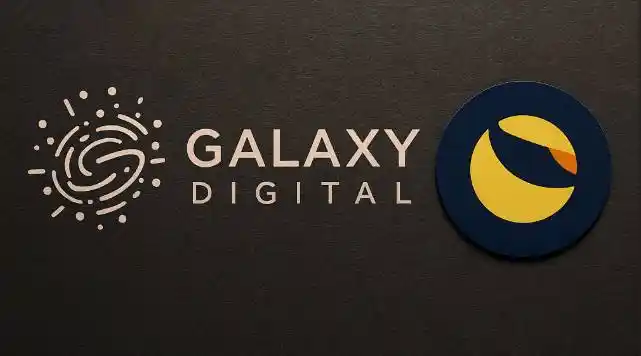
1. How Did Galaxy "Get Involved" with Luna?
Before we dive into this thrilling "selling story," we must first clarify a key player—what exactly is Galaxy?
1.1 Who is Galaxy?
Galaxy Digital, officially known as Galaxy Digital Holdings Ltd., is registered in the Cayman Islands, with its business headquarters in New York, founded by a veteran who has been navigating Wall Street for decades: Mike Novogratz.
Who is he? A former Goldman Sachs partner, he served as a member of the Investment Advisory Committee at the New York Fed and began his foray into Bitcoin as early as 2013, becoming one of the earliest "institutional believers" publicly supporting crypto assets. You have likely seen his name in discussions about "the future of Bitcoin" on CNBC, Bloomberg, and the Financial Times.

In 2018, he founded Galaxy, which manages over $5 billion in assets across 123 subsidiaries worldwide, covering market making, venture capital, trading, custody, research… essentially a "Morgan Stanley of the crypto world."
In other words, if this industry needed a representative that is "most like Wall Street," it would undoubtedly be Galaxy. Clearly, Galaxy was the best partner for Luna, without a doubt.
1.2 What is Luna?
Now let's understand the other main character in this story: Luna.
Luna is a cryptocurrency issued by Terraform Labs in 2018. This project was founded by South Korean Do Kwon, registered in Singapore, with the core goal of creating a dual currency system of "algorithmic stablecoin + main coin."
This ecosystem consists of several parts:
- Terra blockchain: the underlying ledger where transactions occur;
- Luna: the platform's native token, used for governance, staking, and regulating the supply and demand of stablecoins;
- TerraUSD (UST) and TerraKRW: the so-called "stablecoins," claiming to be pegged to the U.S. dollar and the South Korean won;
- CHAI: a South Korean payment app used to promote "real-world use cases."

Sounds impressive, right? But the problem is: its "stability mechanism" relies entirely on market behavior, and once UST loses its peg, Luna will fall into a "death spiral." UST is essentially an algorithmic stablecoin, and so far, there have been no successful cases. In the previous issue "Tariffs are Knives, Currency is Shields," there was a more detailed analysis of stablecoins, which you can check out.
You need to pay attention to the CHAI payment system mentioned above, which is somewhat similar to China's Alipay and America's PayPal. Do Kwon is a co-founder of CHAI. It is precisely because of this real-world connection that Galaxy found important material to pump Luna.
In short: Luna is backed by an innovative financial engineering concept with the potential for success, but the likelihood of failure is even greater. However, Do Kwon believed this story was already exciting enough; he needed to find a "Western spokesperson" to help him tell this story to Americans.
1.3 "Getting Involved": The Trading Script of Western Endorsement
Fast forward to 2020, Do Kwon realized that to make Luna popular, relying solely on Korean speculators and a white paper was far from enough. He needed to gain recognition in the Western market and sought a "credible" brand endorsement. Thus, they approached Galaxy.
In August 2020, Terraform extended an olive branch to Galaxy, proposing a trading suggestion: Terraform hoped that Galaxy could be their advocate, and as long as Galaxy's CEO was willing to promote Luna, they could offer better investment terms.
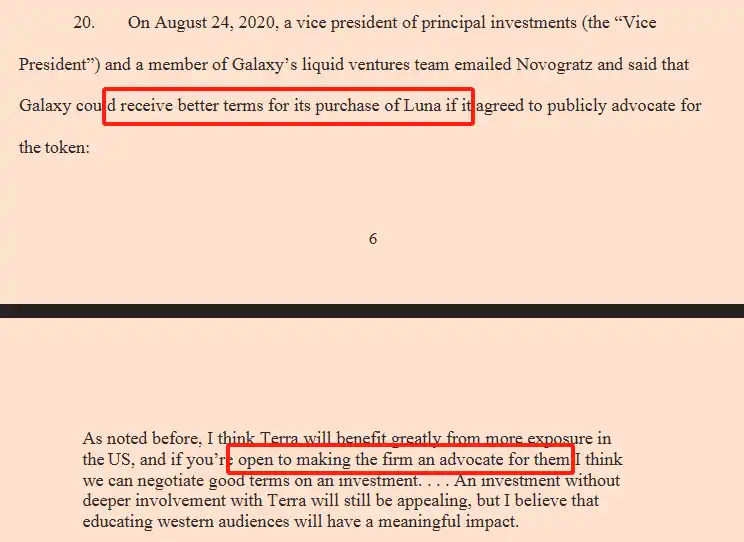
Galaxy immediately began discussions internally. They had already noticed Terraform's technology and recognized the massive capital needs behind the project. On October 27, 2020, both parties finalized the deal, as shown in the image below:

Galaxy invested $4 million; purchasing 18.51 million Luna at a discounted price of $0.22 each; unlocking 1/12 each month, allowing for immediate selling.
Note: At that time, the market price was $0.31, so Galaxy received a 30% discount and was not forced into a lock-up. This was not a "windfall"; it was a trading right earned through endorsement, promotion, and support.
The hidden rule behind this is: as long as you are willing to "say something nice," we will let you "unlock quickly." Galaxy accepted all of this, even writing in an internal memo that Terraform had no recognition in the U.S. market and that only by promoting it could people believe its economic activities were real, as detailed in the text within the red box in the image below.
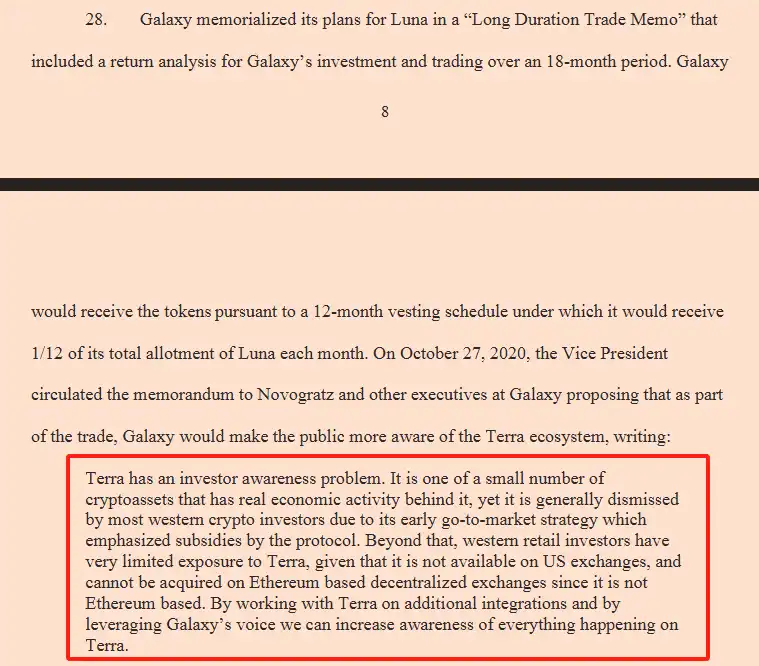
Thus, starting from November 2020, Galaxy began to systematically "mention" Luna in podcasts, tweets, and interviews, causing the price to rise and trading volume to expand rapidly. This rhythm continued for a full year.
1.4 Summary: Struggling for "Money"
The connection between Galaxy and Luna was not due to "ideological alignment" or "technological leadership," but rather a complete "exchange of interests":
- Terraform provided discounts and unlocking privileges;
- Galaxy provided traffic, trust, and packaging;
- Both parties reached an implicit consensus: you handle the setup, I handle the promotion, and no one should expose the truth.
From the results, this "cooperation" was very successful:
- The price of Luna rose from $0.31 to a peak of $119;
- Galaxy profited over hundreds of millions of dollars;
- Retail investors bought in at high prices, subsequently stepping into the "death spiral."
Essentially, this is a typical "structured selling script," but it did not violate traditional securities laws, which is why many KOLs are crying injustice for Galaxy. However, in the face of the Martin Act, this is an outright fraud because your actions contradict your words; while you are pumping up the price, you are also selling off, which constitutes market manipulation and is illegal.
It is precisely for this reason that Galaxy was willing to pay $200 million in settlement to obtain a "guarantee of investigation cessation" from the New York State Attorney General, as shown in the image below.

To analyze Galaxy's method of pumping and dumping, I carefully read this 44-page document, and I will break it down for you one by one.
2. How Did Galaxy Pump and Dump?
Next, we will unveil how Galaxy artfully shouted "faith" while precisely selling off their holdings. Before delving into this lamentable story, I must objectively say a few fair words about Galaxy and Mike Novogratz, so you don't mistakenly think Novogratz is just a "shameless person."
You may not know that as early as 2013, when Wall Street was collectively mocking Bitcoin, Novogratz had already invested real money into it. He not only publicly bought Bitcoin but also expressed his optimism for crypto assets in mainstream financial media, supporting this "financial revolution." More specifically, he predicted in 2013 that Bitcoin's price would rise significantly, and in 2014, he crowdfunded an investment in the nascent Ethereum. He once stated that 20% of his net worth was invested in Bitcoin and Ethereum, which was quite shocking in the conservative and cautious Wall Street circles at the time.
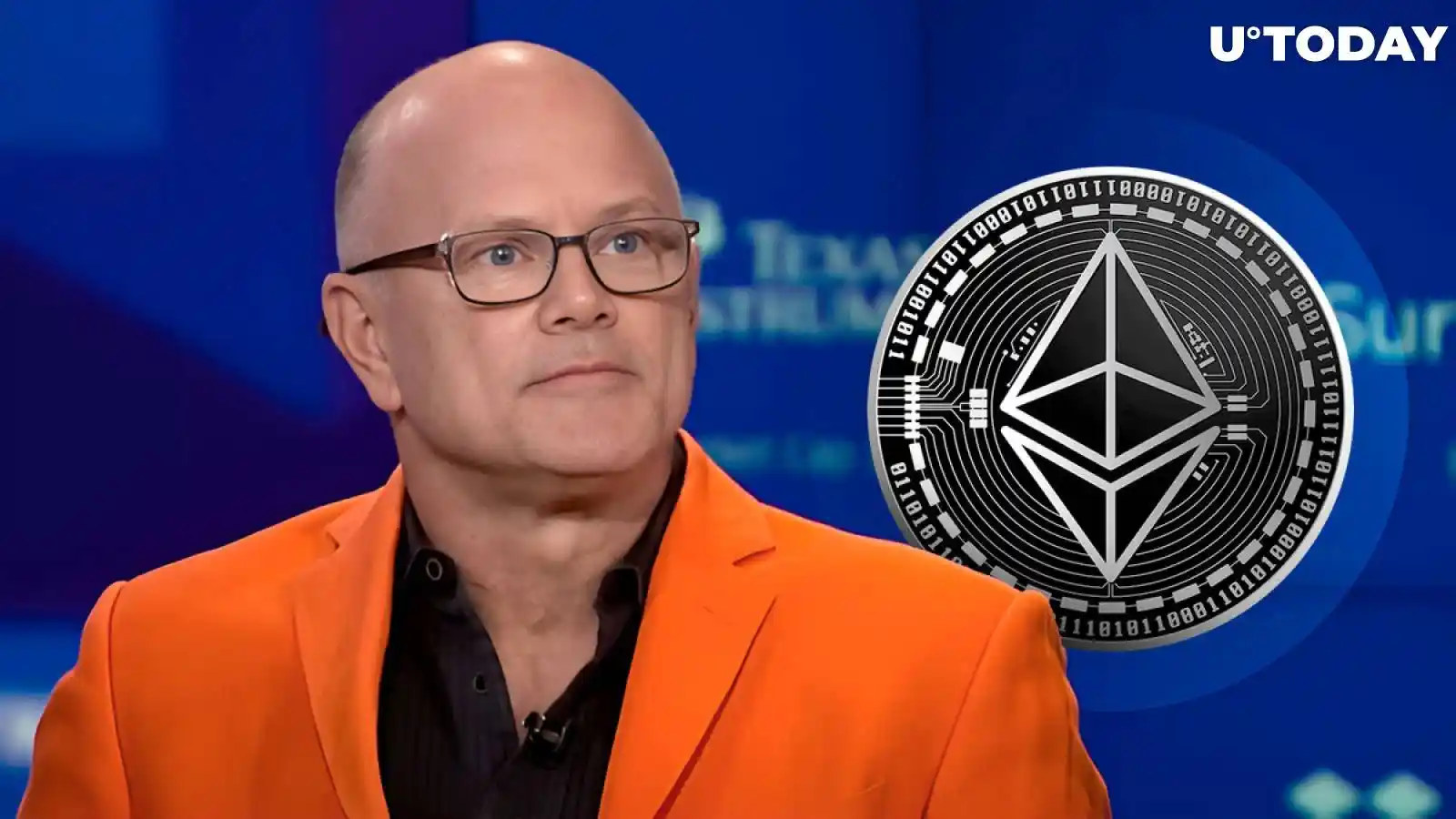
As of 2024, Galaxy has publicly invested in as many as 72 projects, covering top crypto projects like Polygon, Bitfarms, and Celestia, with total investments reaching billions of dollars. Although Circle (the issuer of USDC) and Bitwise (the issuer of crypto ETFs) have not directly disclosed Galaxy's investment records, Galaxy's active participation in ecological cooperation and consulting services has still contributed significantly to the overall ecological construction of the crypto industry.
In other words, the reason you can buy coins on Coinbase today, transfer using USDC stablecoins, and see Ethereum ETFs approved is indeed due to Galaxy's contributions during the early uncertain stages of the market. Galaxy is not a so-called "harvester of external capital," but a genuine "old-school player" that has long accompanied the industry's growth.
This is precisely why the "selling incident" we are revealing today is so lamentable. Because, with Galaxy's long-accumulated market credibility and resource advantages, they could have chosen a more transparent and legal way to profit, rather than getting mired in the currently criticized "gray area of selling."
Unfortunately, Galaxy ultimately could not resist temptation. They fell into the trap they designed, choosing a clever yet unethical way to profit—pumping and dumping.
Next, I will detail how Galaxy manipulated market sentiment step by step to achieve cashing out through sophisticated methods.
2.1 A Small Trial: The First Attempt at "Promoting and Selling"
The story begins at the end of 2020.
The agreement signed by Galaxy allowed for the unlocking of 1/12 of Luna each month. Novogratz, as a Wall Street veteran, naturally understood that the most effective way to make quick money was to "promote while selling."
On November 11, 2020, just as Galaxy had not yet received the first batch of Luna, Novogratz could not wait to start promoting Luna. On the well-known podcast Nugget's News, he told listeners that he had recently bought a bunch of Luna, describing it as a Korean payment company similar to a credit card company, where users could get discounts. See the image below. In fact, this was completely untrue; Luna had no real-world usage.

A few days later, on November 14, a Twitter user asked: "Dude, recommend some coins?" Novogratz immediately replied: "$luna." See the image below.
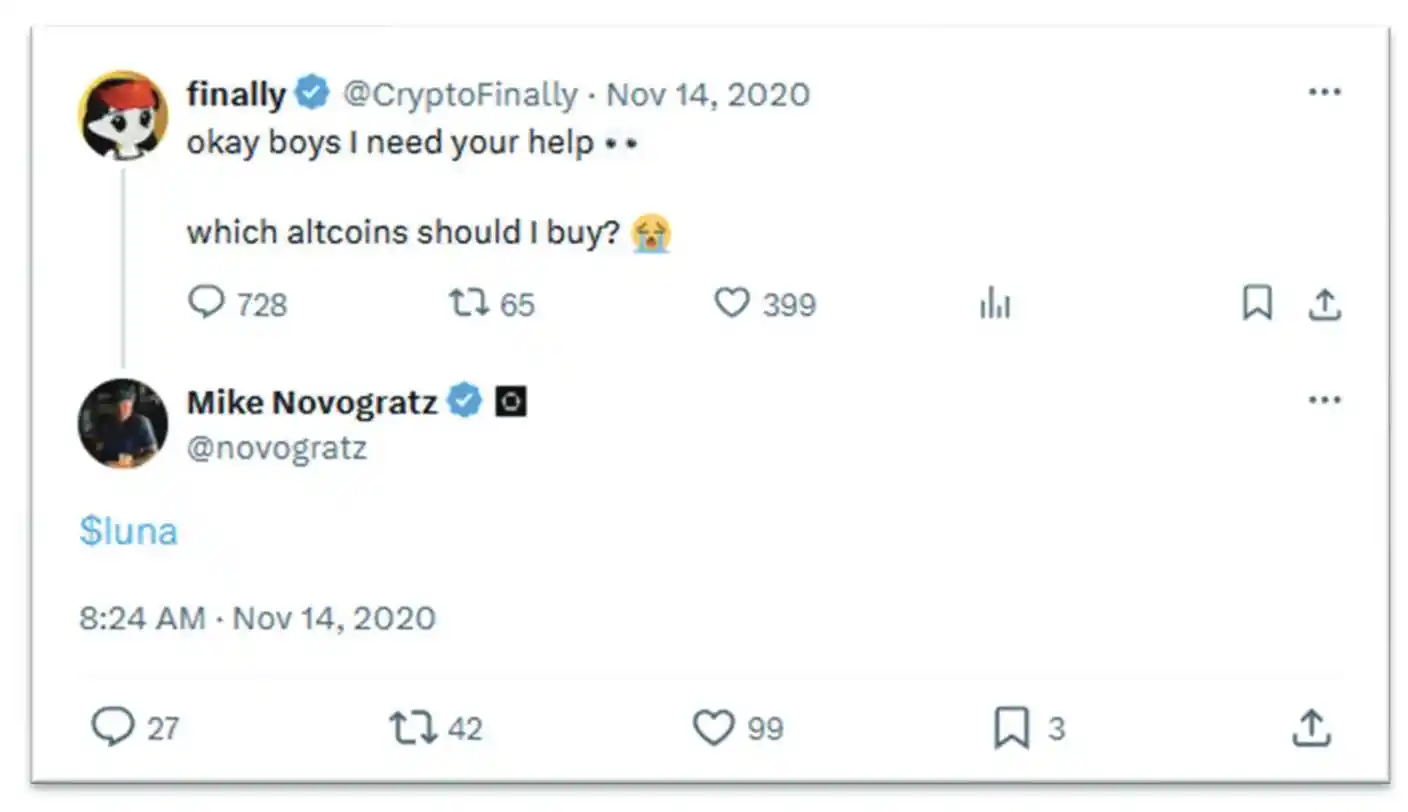
As December approached, Novogratz tweeted that the Korean payment app Chai already had 80,000 active users daily, and $LUNA had great potential! As a result, on that day, Luna's daily trading volume surged from $27.5 million to $69 million, igniting market enthusiasm.
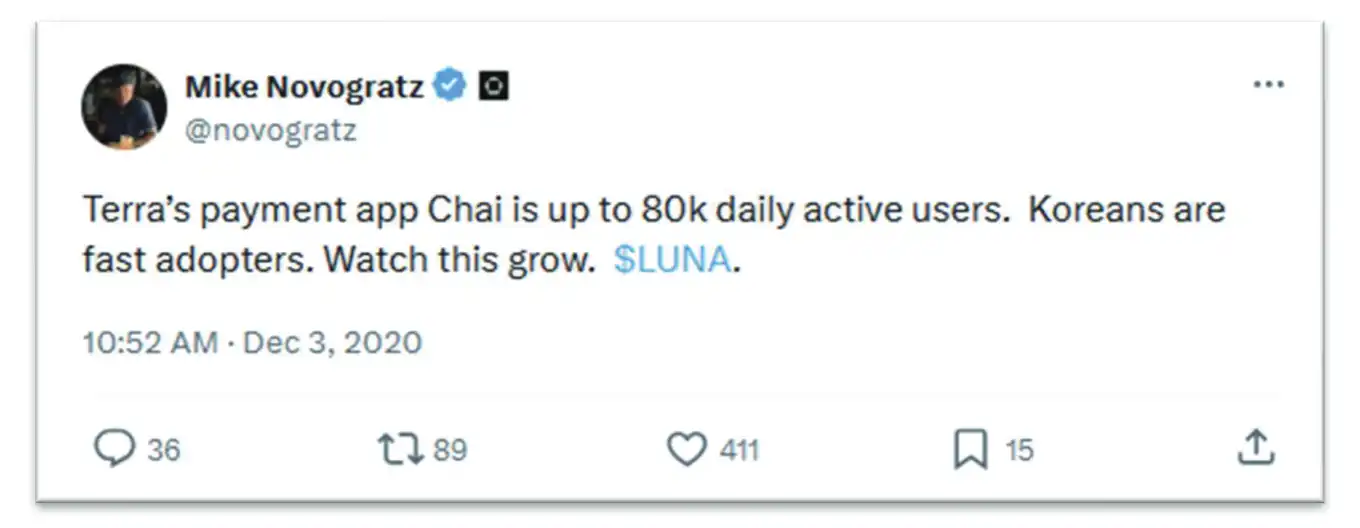
On that same day, Galaxy received the first batch of unlocked Luna: over 1.54 million tokens. This "decent" Wall Street veteran told his internal team: don't rush to sell; his rule was not to sell within three days after posting positive tweets.
Two weeks later, on December 16 and 17, Galaxy sold all of this batch of Luna at prices ranging from $0.50 to $0.52, perfectly concluding their first "promoting and selling" attempt.
Speaking of the earlier "not selling within three days after pumping," it sounds quite principled, right? However, even this self-imposed rule was not well executed. In the face of the flood of money, everything seemed so fragile.
2.2 The Battle for Recovery: Bloomberg's Divine Assistance
Galaxy was clearly addicted to "promoting and selling." But to quickly realize profits and recover their investments, they needed a bigger stage. This time, they chose mainstream financial media—Bloomberg.
In January 2021, Galaxy proactively contacted Bloomberg, providing a press release containing false data, claiming:
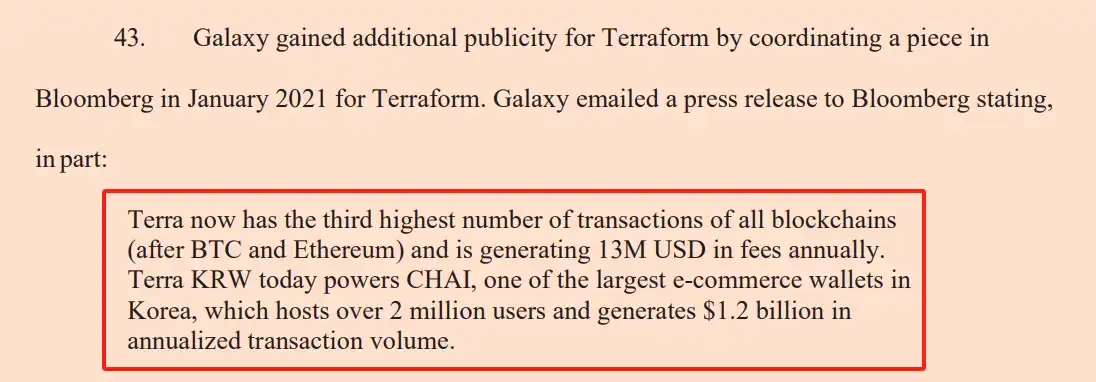
Terra now has the third highest number of transactions of all blockchains (after BTC and Ethereum) and is generating 13M USD in fees annually. Terra KRW today powers CHAI, one of the largest e-commerce wallets in Korea, which hosts over 2 million users and generates $1.2 billion in annualized transaction volume.
Translation: Terra has become the third largest blockchain in the world by transaction volume, only behind Bitcoin and Ethereum, generating $13 million in annual fee income. Terra's Korean won stablecoin (TerraKRW) supports one of Korea's largest e-commerce wallets, CHAI, which has 2 million users and an annual transaction volume of $1.2 billion.
The reality is that Chai's transactions did not use the Terra blockchain at all; all payments were still made in Korean won, completely unrelated to Luna and TerraKRW. So why did Galaxy and Terra have to fabricate lies and use Chai as a prop? Because without Chai as a backing, this story would lack imagination.
On January 26, 2021, Bloomberg published a blockbuster report titled "Novogratz Invests in Crypto Startup Serving Millions in Korea," and the price of Luna immediately soared from $0.89 to $1.23.
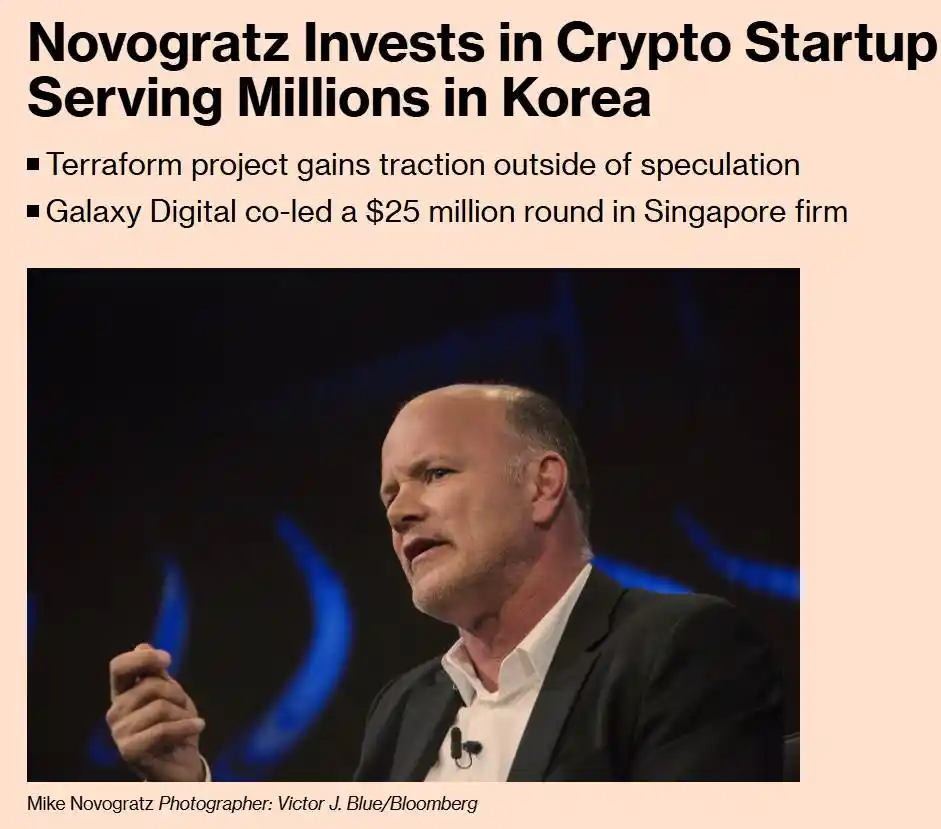
CoinTelegraph reported with the headline "LUNA doubles in price after $25 million investment by Galaxy Digital," triggering a market frenzy.

Just a few days after the Bloomberg report, Galaxy sold off again. On January 30, 2021, they sold over 1.54 million Luna at a price as high as $1.47 each. At this point, Galaxy had successfully recouped their initial investment of $4 million.
This battle was fought cleanly and decisively, truly illustrating what it means to master the "art of selling."
2.3 Escalation: The Combination of Tattoos and False Data
After recouping their investment, Galaxy became even more reckless. They began to pull out all the stops.
In March 2021, Novogratz tweeted: "If Luna reaches $100, I will get a Luna tattoo!" This personal commitment struck a chord and quickly caused a stir in the community.
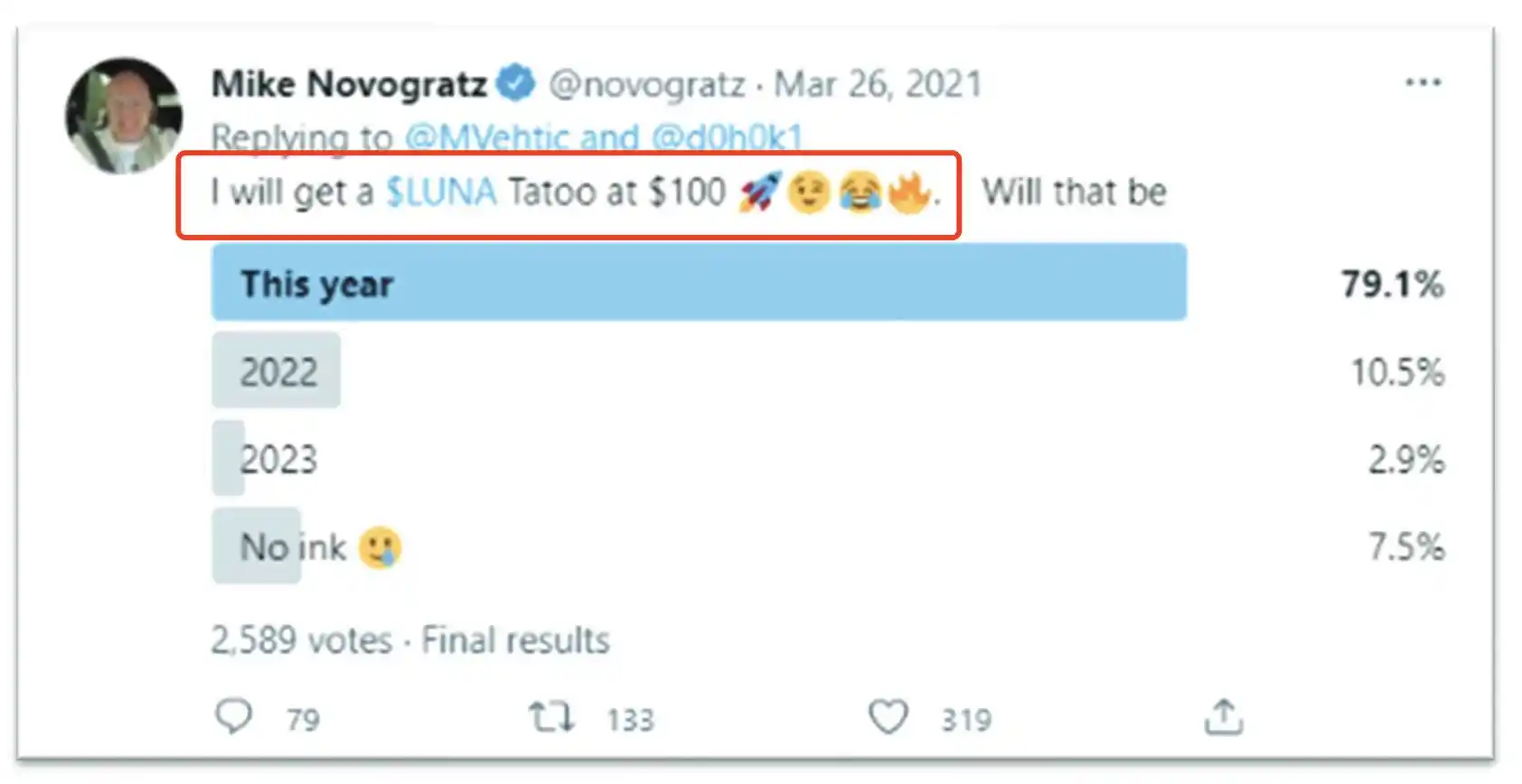
At the same time, Novogratz continued to blur the lines between Chai and Terra, leading people to repeatedly believe that the Terra blockchain had powerful real-world applications. For example:
On April 26, 2021, Novogratz claimed in a podcast that 6% of payments in Korea were made using Chai.
On May 21, he exaggerated further, stating that 7%-8% of payments in Korea were made through the blockchain-based Chai.
On June 22, he again claimed that 8% of payments in Korea were all made using Chai.
On September 13, during a speech at the Barclays Global Financial Conference, he stated that 9% of payments were completed through the Luna blockchain.
However, Chai actually accounted for less than 1% of the total transaction volume in Korea, and Chai was not supported by the Terra blockchain, having no connection to Luna whatsoever. These figures were completely false, but the effect was immediate; after each statement, Luna's price surged, and Galaxy seized the opportunity to sell off their holdings:
In early May 2021, they sold 1.3 million Luna at a peak price of $18.60 each;
On June 4, they sold nearly 1.79 million Luna at around $6.91 each;
In early August, they sold another 1.61 million Luna, with prices ranging from $12.19 to $14.79.
By the evening of December 24, 2021, just before Christmas, Luna really did reach $100! Novogratz kept his promise and shared a photo of his Luna tattoo on his arm, igniting a frenzy on social media.
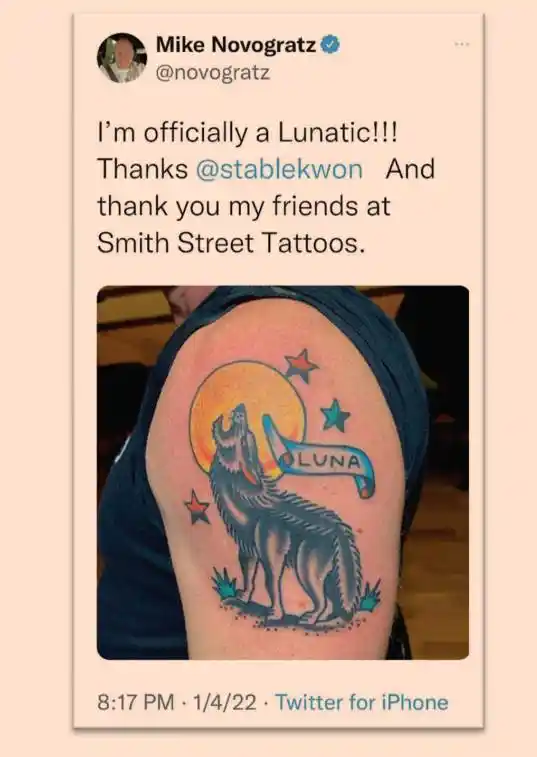
However, while getting tattooed and selling off, Galaxy showed no signs of stopping. On Christmas Day, they began selling Luna at $96.96. In early January 2022, Galaxy continued to sell off large amounts at high prices around $90, cashing out tens of millions of dollars.
Can you imagine? When Novogratz posted that photo of his tattooed arm, the traders behind the scenes were rapidly typing away, frantically dumping Luna into the eager market.
2.4 The Final Frenzy: Shouting "Keep the Faith" While Massively Selling Off
At the beginning of 2022, Galaxy and Novogratz began their final frenzy.
On January 5, as Luna slid from its high of $100 to around $80 and market sentiment began to waver, Novogratz made another appearance. He reassured anxious investors on Twitter: "After a big market surge, there will always be a consolidation. $100 is just a symbolic number. Be patient, Luna will definitely rise. Keep the faith!"
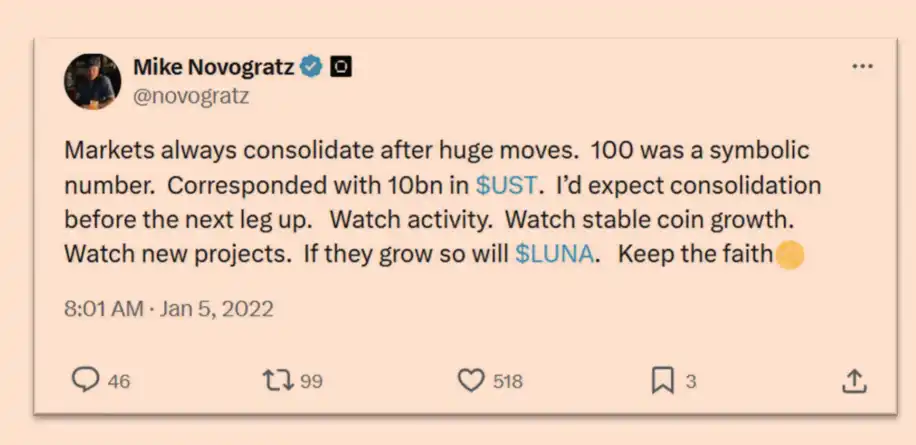
This famous "Keep the faith" seemed like a shot of adrenaline, reigniting hope among tens of thousands of Luna holders. However, at the same time, Galaxy's trading room was playing out a completely different scene:
On January 5, Galaxy sold off over 160,000 Luna, with prices ranging from $77.51 to $84.80, cashing out about $13.58 million that day;
Immediately following, on January 6 and 7, Galaxy sold off over 520,000 Luna again, totaling nearly $40 million;
From January 10 to 13, within just four days, Galaxy sold nearly 680,000 Luna, cashing out over $50 million once more.
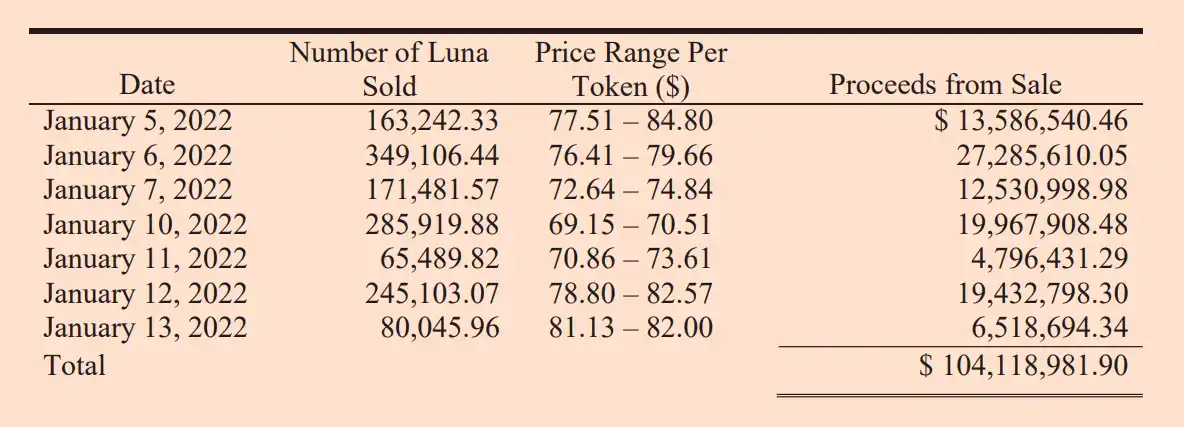
In the midst of Novogratz's passionate "Keep the faith" message, within just a week, Galaxy had quietly sold over 1.3 million Luna, cashing out a total of $104 million! Meanwhile, they did not disclose any of their selling activities to the public, maintaining their image as "believers."
An even more absurd scene occurred on January 15. When Luna dropped to around $87, Novogratz humorously retweeted an image of "Viejo Lobo" (Spanish for "Old Wolf"), joking that his position in the Luna community was akin to suggesting he was an experienced old wolf, comfortably fishing.

However, just an hour and a half after posting that tweet, Galaxy quickly sold 13,276 Luna, precisely capturing a brief rebound and cashing out $1.15 million. In the following week, Galaxy almost frantically sold over 1.1 million Luna, with prices continuously dropping from $69 all the way down to $48.
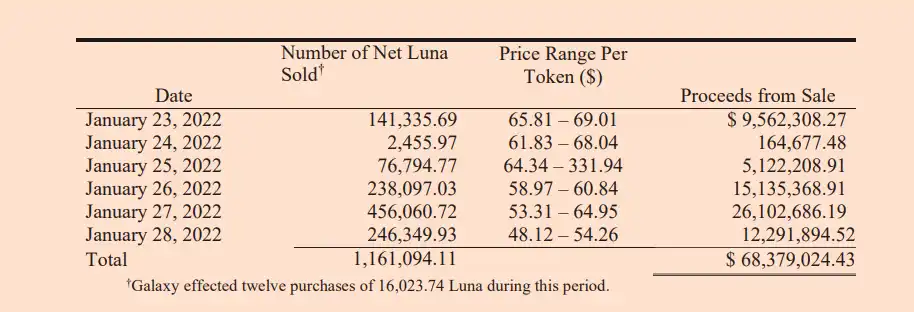
Despite this, Novogratz continued to shout "Keep the faith," encouraging followers to hold on, as if this was just a normal market adjustment.
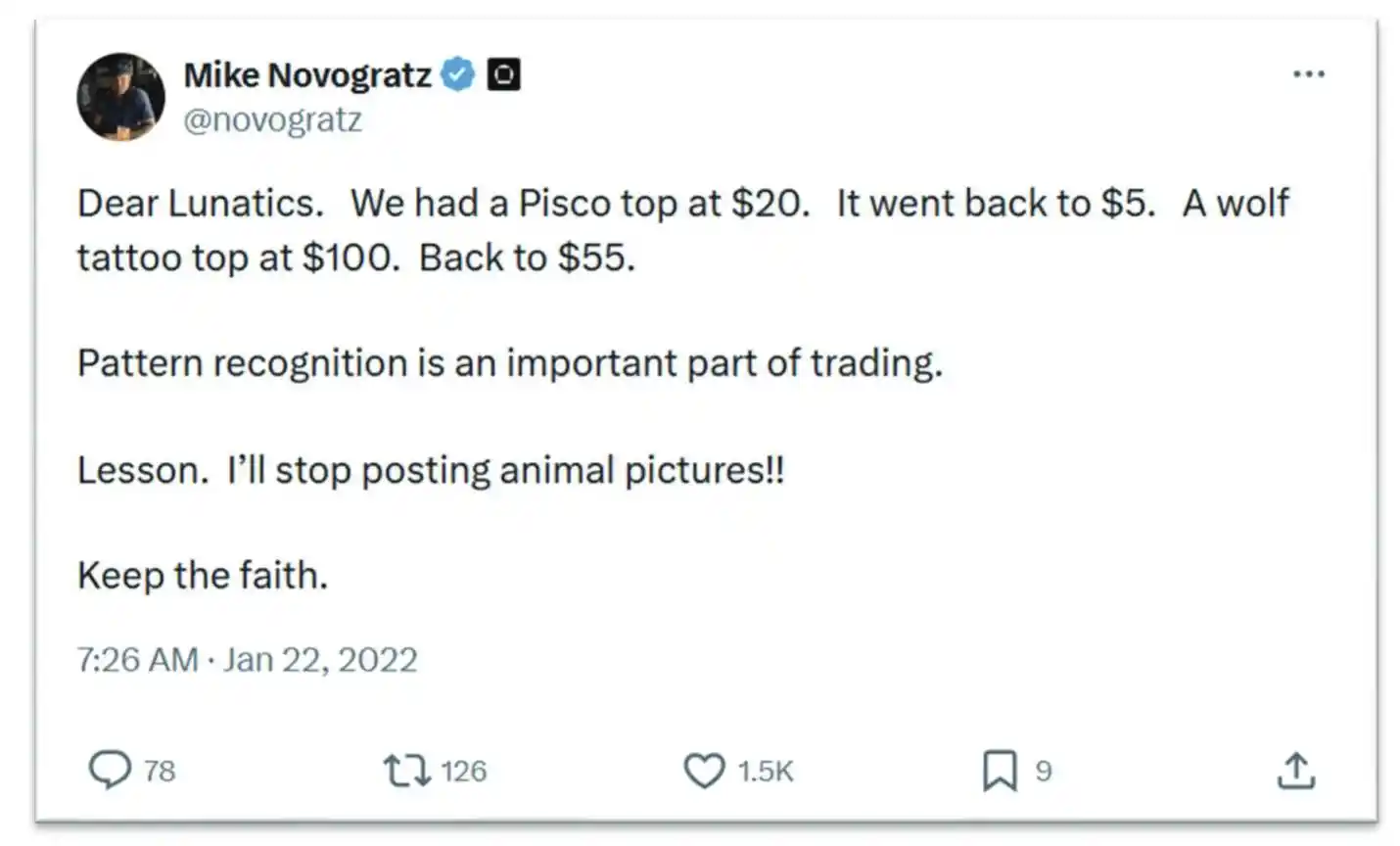
2.5 Summary: After the Revelry, Chaos Reigns
The final frenzy of Galaxy and Novogratz with Luna perfectly illustrated the art of institutional selling. On the surface, they always played the role of loyal crypto evangelists, inspiringly shouting "faith," even going so far as to tattoo the Luna symbol on their arms. However, behind the spotlight, they meticulously laid out plans to sell Luna on a large scale and continuously until their positions were nearly cleared.
The end of this game was destined. On May 9, 2022, when TerraUSD (UST) completely collapsed, triggering Luna's death spiral, Luna's price plummeted from $65 to $0.004 in just three days, erasing $40 billion in market value. But by this time, Galaxy had already exited safely, with only 2,060 Luna left on their books, worth less than $10.
Next, it's time for us to reflect.
3. Can You Avoid This Scam?
After witnessing the tumultuous story of Galaxy's pump and dump, you may have an urgent question in your mind: If I were a bit smarter and more cautious, could I have avoided this scam?
To answer this question seriously, we must adopt an objective attitude, based on facts and data, to gradually unravel the clues hidden behind such scams, as well as the advantages and disadvantages that ordinary investors possess. Next, we will conduct an in-depth analysis from both the "why it can" and "why it cannot" perspectives.
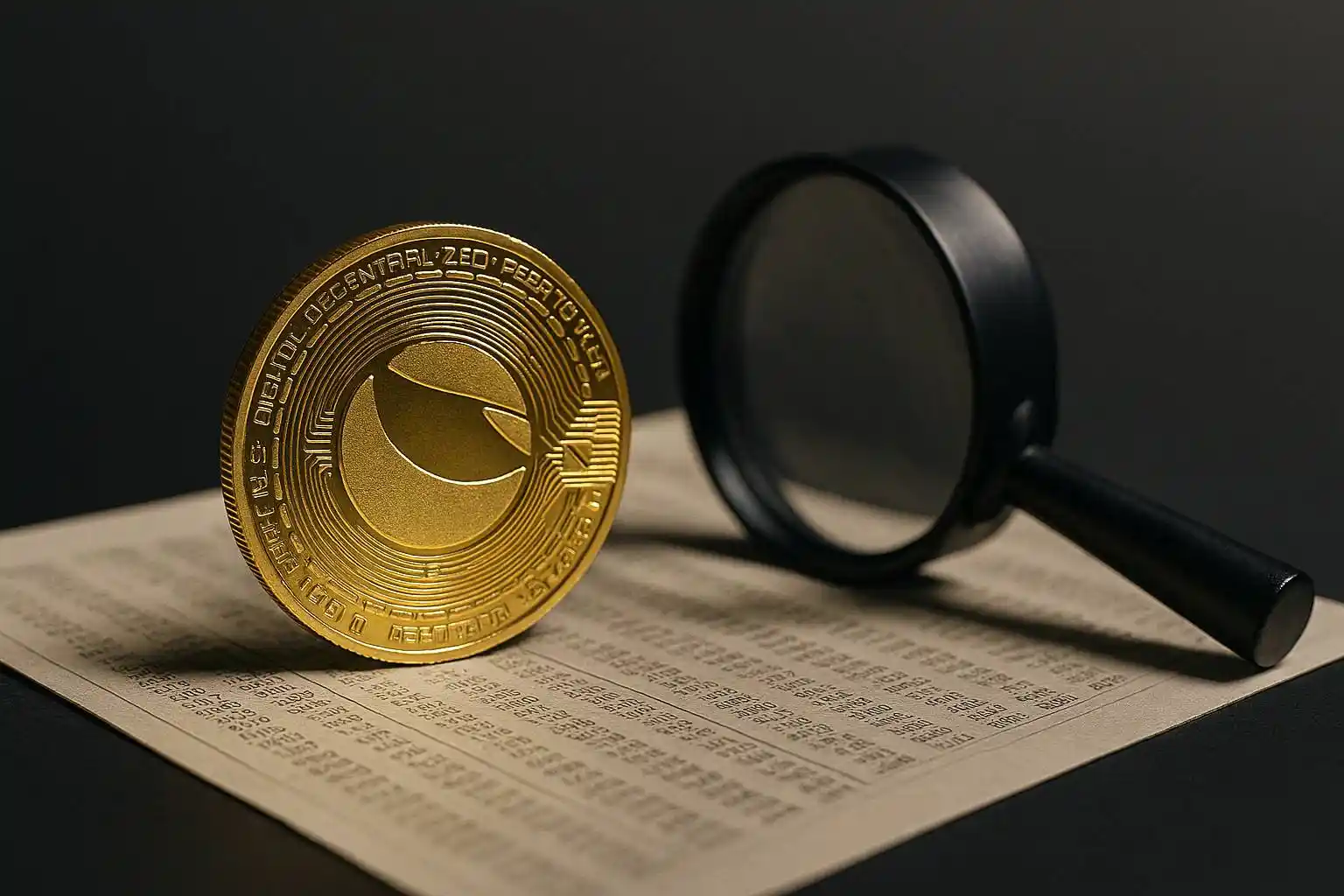
3.1 Why It Can?
In fact, if you can maintain sufficient vigilance, possess enough common sense and patience, it is entirely possible to avoid the carefully woven "pump and dump" scam by Galaxy.
First, the Clues of Exaggerated Data
Careful investors can easily detect that the data used by Galaxy and Novogratz in their promotions contains serious exaggerations or even false elements with just a little bit of research.
For example, Novogratz repeatedly claimed:
In April 2021, 6% of payments in Korea were made through Chai.
On May 21, this number became 7%-8%.
By September, Novogratz boldly claimed that 9% of payments in Korea were completed using the Luna blockchain.
But what do the actual data show? According to official data from Chai (which can be checked through channels like Chaiscan), Chai's payment transaction volume has consistently accounted for less than 1% of the Korean payment market. Moreover, Chai has never actually used the Terra blockchain for settlement transactions.
If you check the Chaiscan data, you will find that these so-called powerful application scenarios are mere castles in the air. In other words, if you pay a little attention, you can easily discover the significant data discrepancies and misleading elements in Galaxy's promotions.
Second, Obvious Signs of Long-Term Cashing Out
Another important clue for identifying the scam is the market performance following each public promotion by Galaxy. For example, on December 3, 2020, when Novogratz announced on Twitter that Chai had 80,000 daily active users, Luna's trading volume surged from $27.5 million to $69 million that day. Just two weeks later, Galaxy quickly sold off their first batch of Luna at a price of around $0.50, achieving rapid cashing out.
For example, on January 30, 2021, just a few days after Bloomberg reported on Galaxy's investment in Luna, Galaxy quickly sold off 1.54 million Luna again. The timing of these sell-offs was very close to the positive publicity, with each instance occurring immediately after the price was raised. This pattern of selling reappeared every month thereafter. If you paid a little attention to on-chain data or the circulation of Luna, you could clearly see the signs of large holders regularly reducing their positions, suggesting that the operators behind it might have structured selling intentions.
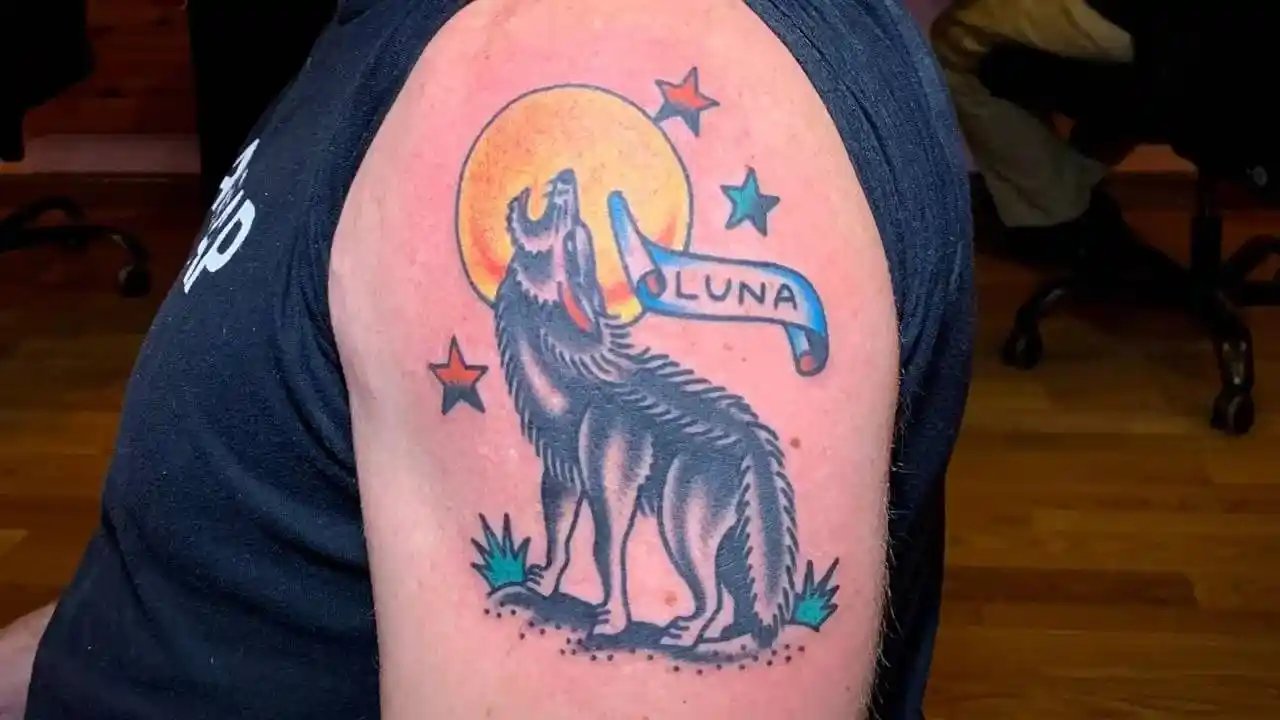
Third, Exaggerated Personal Endorsements
The third signal that can help you avoid the scam is Novogratz's obviously exaggerated personal endorsements. Novogratz said: if Luna reaches $100, he would get a Luna tattoo! While such personal commitments can boost emotions, they are also overly exaggerated and obvious, exposing the operator's urgent desire to drive market sentiment.
Truly professional investors and institutional investors typically do not make such clear market commitments in public. When the market sees similar dramatic promises or overly extreme calls, cautious investors should raise their vigilance and avoid blindly following the trend.
3.2 Why It Cannot?
However, while rational analysis is important, we must also acknowledge that for the vast majority of ordinary investors, avoiding a high-level, structured scam like Galaxy's is extremely difficult, if not nearly impossible.
First, the Authority Effect of Institutions is Too Strong
Mike Novogratz, the CEO of Galaxy Digital, is a legendary figure in the crypto market. He was a partner at Goldman Sachs and has long appeared on top financial media such as CNBC and Bloomberg. Coupled with his early successful investments in Bitcoin and Ethereum, he has established a very high level of authority and credibility.
For ordinary investors, seeing such an "industry expert" who has accurately predicted market trends personally recommending a project can easily create a strong psychological anchoring effect, quickly relaxing their vigilance and making decisions entirely based on the expert's recommendation, abandoning independent thought.
Galaxy precisely exploited this authority effect to successfully manipulate market sentiment. For most investors, it is extremely difficult to see through the hidden motives behind this authority.
Second, Sophisticated Media Operations and PR Strategies
When promoting Luna, Galaxy collaborated with several top media outlets (such as Bloomberg and CoinTelegraph) to successfully create a seemingly credible market impression of Luna. The Bloomberg report on January 26, 2021, clearly showed that Galaxy directly provided false data to Bloomberg, exaggerating the strong ecosystem and real-world applications of Terra and Luna, creating the illusion of explosive market growth.
This precise manipulation in the media made it difficult for ordinary investors to harbor doubts. After all, when ordinary people see affirmative reports from mainstream media about a project, they naturally tend to believe that this is objective and reliable information that has been investigated by the media, making it hard to think that this is a carefully designed manipulation of public opinion.

Third, Emotional Manipulation of "Keep the Faith"
From a psychological perspective, Novogratz's "Keep the faith" slogan effectively manipulated investors' emotions. When the market declines, what ordinary investors most want to hear is encouragement to maintain their faith and not give up easily.
This emotional guidance is more penetrating than any rational analysis. Novogratz adeptly utilized this emotion, using infectious rhetoric to firmly control market sentiment, causing investors to remain unwilling to sell during downturns, and even to continue buying at low levels, becoming the ones left holding the bag.
In reality, when Galaxy was frantically selling off at high prices, ordinary investors could hardly maintain a completely clear state of mind. Because when everyone is shouting about faith, skeptics are viewed as outliers, bearing immense psychological pressure.
3.3 Summary: The Balance Between Can and Cannot
Returning to our initial question: Can you avoid this scam?
Objectively speaking, it depends on how much market knowledge, investment experience, and independent thinking ability you possess. If you are attentive enough to keenly perceive the discrepancies between data and reality, able to identify the abnormal cashing out patterns after each call, and remain vigilant against dramatic promotions, you could potentially see through the scam in advance.
However, if you are just an ordinary investor, misled by the halo of institutional authority, deceived by the media's careful packaging, and swayed by emotional slogans, then in the face of Galaxy's meticulously designed script, most people are almost unable to escape. The market always exists with greed and deception; Galaxy's story is not the first, and it will certainly not be the last.

Conclusion
The line of trust between preaching and harvesting, once crossed, becomes the sharp edge of the sickle. Behind every scam is a game of human greed and fear.
In the story of Galaxy and Luna, we see how authority becomes a tool for harvesting, how media becomes a loudspeaker for scams, and how emotions become fuel for greed. But ultimately, there is no free wealth in this world, nor is there any unearned riches.
Faith is originally the most moving term in the investment world, but when it is used by those with ulterior motives to manipulate the market, faith becomes poison, ultimately backfiring on every blind follower.
However, we must also acknowledge that Galaxy is not merely a predator. They bravely stood at the forefront when the crypto market was still in its wild stage, injecting capital and confidence into the industry. Novogratz's foresight and Galaxy's contributions to the standardization of the industry have indeed pushed the crypto world toward the mainstream. They have accompanied this industry through ups and downs, witnessing and promoting a change of eras and the rise of industries. Unfortunately, when the temptation of capital collides with the moral bottom line, Galaxy failed to maintain its original intention and chose a less honorable shortcut.
True investors must understand that investing is not about relying on the guidance of authority, nor is it about depending on the clamor of the media, but rather about relying on their own independent thinking and rational judgment.
Because: every time you blindly follow, you are paying for the scam; and every time you question, you are accumulating capital for freedom.
From today on, please remember:
Do not blindly trust authority; believe in data;
Do not follow blindly; think independently;
Do not be swept away by emotions; use rationality to take control.
After all, the market is never merciful; only those who truly remain clear-headed deserve to have true wealth freedom.
Finally, we should thank the "Martin Act," hoping that under the strong deterrent of the "Martin Act," KOLs' pump and dump will no longer be so reckless.
免责声明:本文章仅代表作者个人观点,不代表本平台的立场和观点。本文章仅供信息分享,不构成对任何人的任何投资建议。用户与作者之间的任何争议,与本平台无关。如网页中刊载的文章或图片涉及侵权,请提供相关的权利证明和身份证明发送邮件到support@aicoin.com,本平台相关工作人员将会进行核查。



